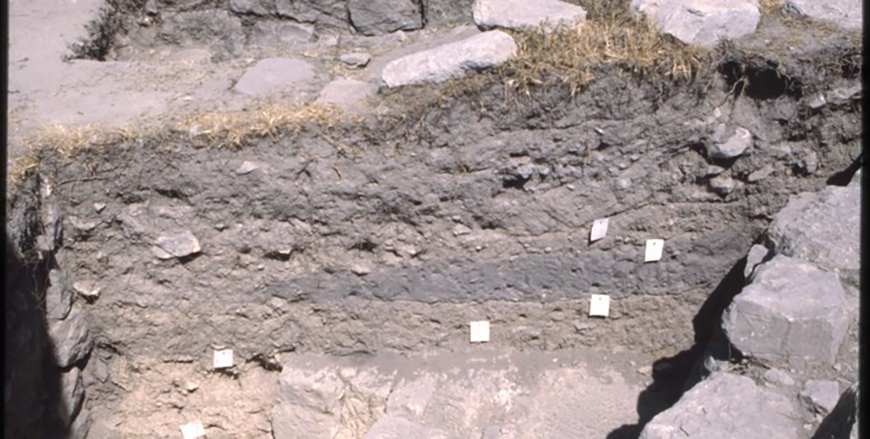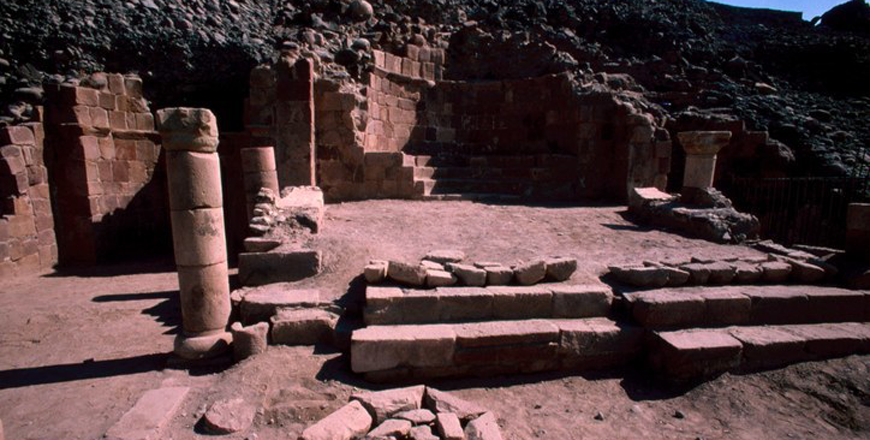You are here
In-depth study of Nabatean small votive offerings in Petra
By Saeb Rawashdeh - Aug 10,2024 - Last updated at Aug 10,2024

The Royal Nabatean tombs in Wadi Mataha (Photo courtesy of ACOR)
AMMAN — Brigham Young University from Provo initiated Wadi Mataha project in Petra and they tested the theory generated from the previous excavations that lithics, pottery sherds, fossils and other small objects were used by the Nabataeans as votive offerings in ritual situations and sometimes decorated with the images of Nabataean, Egyptian, or Graeco-Roman deities.
The research team worked on an open-air shrine, on a large platform in front a Nabataean tomb, on a large rock-cut Nabataean tomb, on a group of west-facing Nabataean niches, on a Nabataean rock-cut high place and on a trench in front of a Nabataean petroglyph.
Archaeologists found ceramics that consisted of red wares with tan, black and orange slips, and Nabataean light and red painted fine ware were also unearthed.
"A small amount of coarse brown ware and crude black ware, possibly Edomite, was also recovered. Identified forms include cooking pots, jars, juglets, unguentaria, bowls and cups with ring bases, and a large concentration of jar handles in area 14D. Other materials include 23 lithic cores, 283 lithic flakes, 13 quartz pebbles, two micro burins, one awl, three blades, four bladelets, 21 microliths, and three3 fossils," noted the scholar David Johnson from Bringham Young University.
Two levels of construction were noted in the platform area: The upper level is more roughly built, with flat, irregular blocks and less levelling of the floor. In 14B, east of the platform, a roughly built ramp leads up to the platform area from an unexcavated stairway that leads to the tomb from the wadi bed, Johnson continued.
"A lower level of construction has a perfectly level floor of cut flat ashlar sandstone slabs. Ceramics indicate a period of use from the late first century BC to the late first century AD, based on both Nabataean light red and dark red painted fine ware plate and bowl fragments found in the levels. Significant finds include a carved bone Dhushara figurine and a coin of Malichus II," Johnson elaborated.
In one of tombs, recovered ceramic sherds included black wares, red wares with tan, yellow, and black slips, fine red ware bowls and cups, Nabataean dark red painted thin ware plate, terra sigillata, Nabataean plain orange ware bowls and plates, brown drip-painted jars and a Hellenistic black ware fusiform unguentaria.
Other finds included goat, snake, falcon, bird and dog bones, a large number of lithics and lithic cores, fossils, a large quantity of wooden objects, including carved and painted images of Dhusares, textiles with blue bands, and wooden and faience beads.
"Overall, Site 16 represents a significant discovery in terms of Nabataean funerary practices at Petra because of the excellent preservation of organic materials. The wooden objects especially offer new insights into their use as ritual objects accompanying the dead into the afterlife," Johnston underlined, adding that Site 16, based on the ceramic types present, was probably used from the last part of the first century BC until the end of the first century AD.
All the Nabataean painted wares were of the light red on orange variety, indicating an early first-century AD date for the surrounding features and a small, flat Nabataean platform was uncovered below the niches, he continued, adding that
Site 18 is a rock-cut Nabataean high place triclinium isolated above the wadi bed at the junction of the Wadi Mataha and the Sadd Maajan.
"Pottery included a heavy concentration of red wares with tan and blackslips, Nabataean fine light red painted ware plates, cups and bowls, everted rim jars, juglets with strap handles, and piriform unguentaria. This is consistent with an early first-century AD date for the use of this area," Johnston underscored.
Related Articles
AMMAN — Gharandal was a significant site during the Byzantine and early Islam period and pottery was assembled from the site during the 1997
AMMAN — Mughur Sabik and Mudayna Thamad are located in the close proximity, just a few kilometres from each other.
AMMAN — The Dead Sea region has been inhabited since prehistoric times, with thousands of graves dating back to the Neolithic and Bronze Age



















